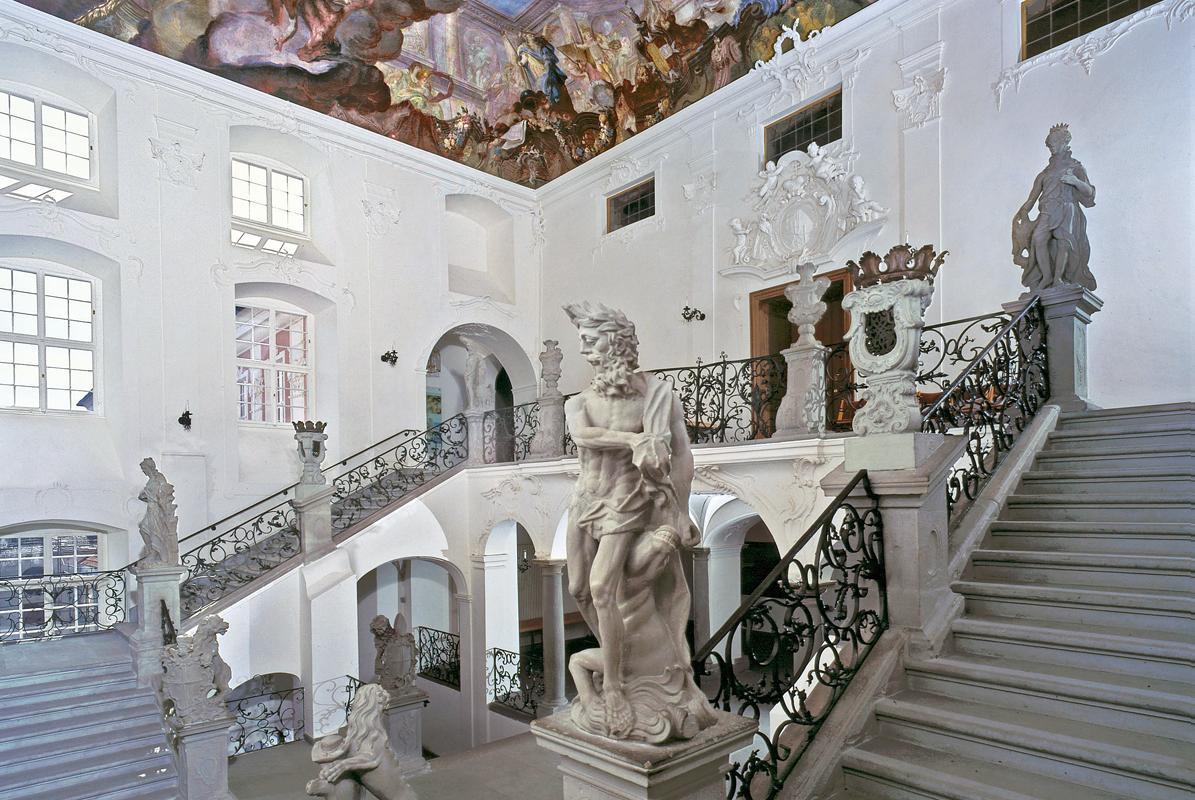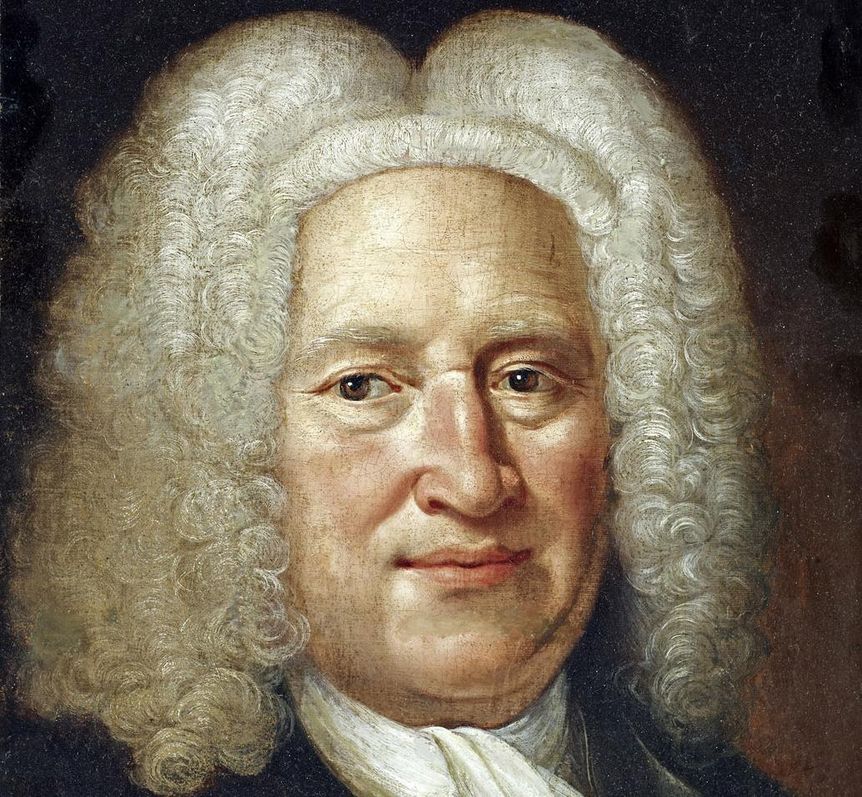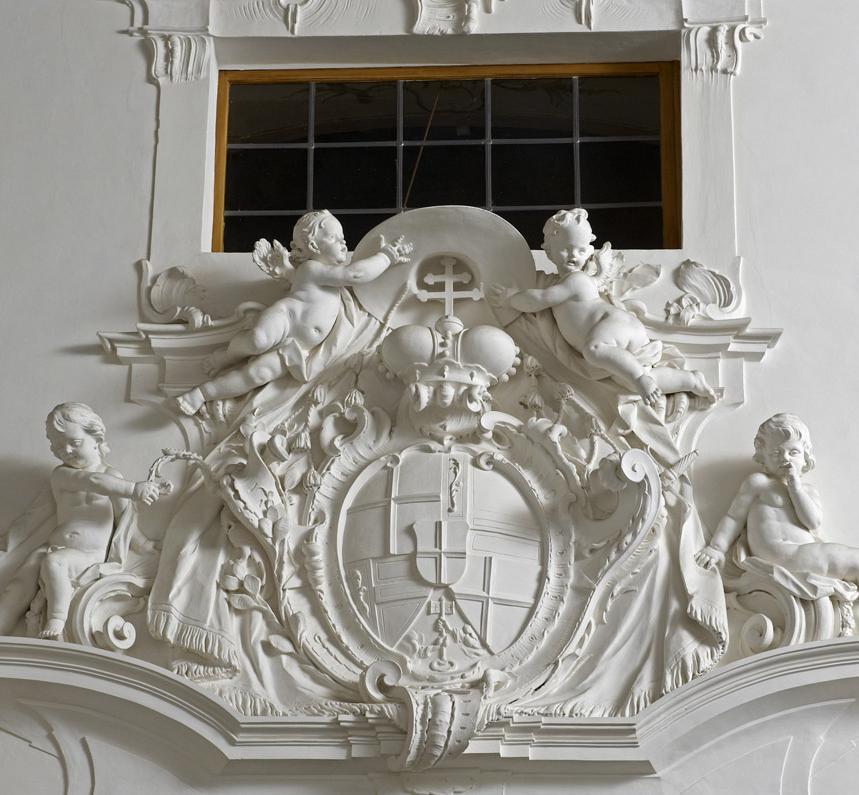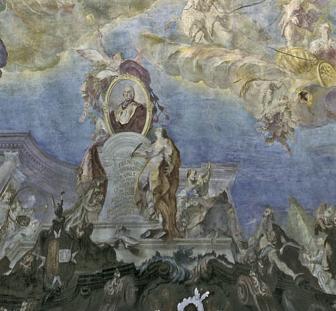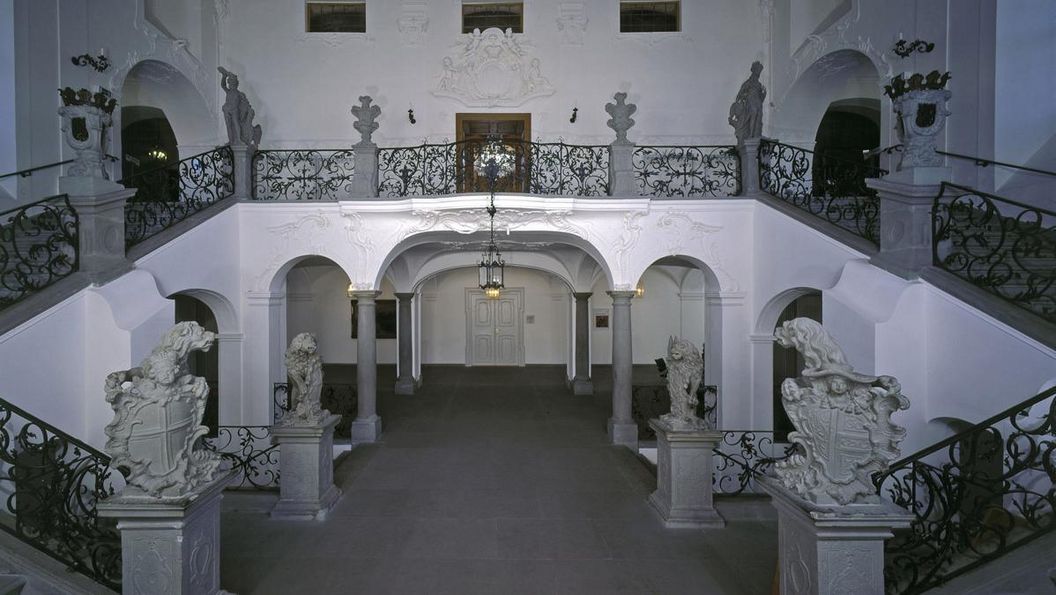A majestic climbThe staircase
The splendid staircase connects the entrance hall and the bel étage, the representational main floor in the third story. Today, visitors still follow the same path that high-ranking guests walked when attending celebrations in the time of prince-bishops.



